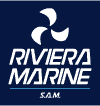Clarksons Research have released their latest tracker of green technology uptake across the world shipping fleet. As emissions regulatory and policy decisions continue to “ramp up” across maritime, Clarksons Research is closely tracking uptake of “green” technology that will impact the shipping industry’s 856mt and 2.4% contribution to global CO2 (and 1.8% of all GHG). Summarising the latest trends in technology uptake and fleet renewal from our Fuelling Transition report and monthly data series, Steve Gordon, Clarksons Research Managing Director, commented:
Uptake of alternative fuels has continued to progress steadily, with 4.2% of the fleet on the water and 34.0% of the orderbook in tonnage (GT) terms capable of using alternative fuels or propulsion.
This includes 29.7% of orderbook tonnage set to use LNG (546 units), 2.5% to use LPG (95 units) and 1.8% due to use other alternative fuels (c.200 units; including methanol (22), ethane (10), biofuels (2), hydrogen (3) and battery/hybrid propulsion (150)).
Over 244 ships in the fleet and 95 on the orderbook are designated ‘LNG Ready’, while there are now 24 ‘Ammonia Ready’ and 5 ‘Hydrogen Ready’ vessels on order.
Scrubbers are now fitted to over 4,541 ships in the fleet (23.9% of total GT). While scrubber retrofitting activity has slowed (Jan 2020: ~300 per month, October 2021: ~20 per month), newbuild uptake is up from 2020, with over 220 newbuild orders for scrubber-fitted units reported in 2021 so far, including 186 containerships.
Energy saving technologies (ESTs) have been fitted on over 4,259 ships, accounting for 20.4% of fleet tonnage: including propeller ducts, rudder bulbs, Flettner rotors, wind kites and air lubrication systems.
‘Eco’ ships make up a growing share of the fleet (‘modern’ eco vessels now 26.8% of total GT) with implications for earning potential, asset values and increasingly “tiered” and complex charter markets.
‘Green’ port infrastructure is continuing to expand: currently 141 active LNG bunkering ports (and 95 planned facilities), while over 1,086 vessels fitted/set to be fitted with shore power connections; Clarksons Research are also collecting data on ammonia and hydrogen infrastructure.
BWMS retrofit programme ongoing: majority of fleet tonnage (64.8%) now BWMS-fitted.
As pressures build globally to find solutions to moderate climate change, the Green Transition will cause fundamental change to shipping, trade, offshore and energy. We are committed to providing data and intelligence to help frame the critical decisions that stakeholders across our industry will need to make to facilitate the Green Transition. Clarksons Research will continue to support its clients to (i) understand, in commercial terms, upcoming technical regulation (ii) track technology uptake by the shipping industry (iii) analyse the impact of environmental policy, regulation and technology on market supply / demand, asset values, vessel earnings and companies and (iv) project scenarios for required investment, including newbuildings.
Source: Clarksons Research
RIVIERA MARINE S.A.M.
MONACO BUNKER TRADERS
Edit Content
Riviera Marine S.A.M.
«Est-Ouest»
24 Avenue Princesse Grace
MC 98000 – Principauté de Monaco
Tel: +377 99 99 61 48
Email: bunkers@rivieramarine.mc
